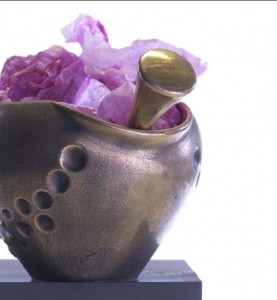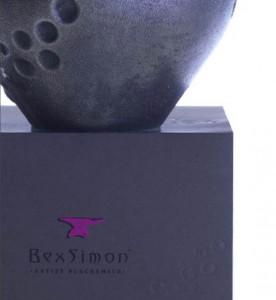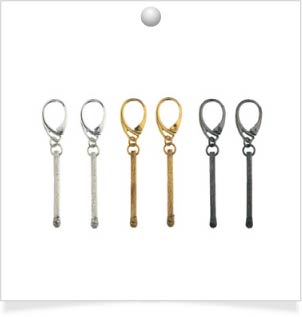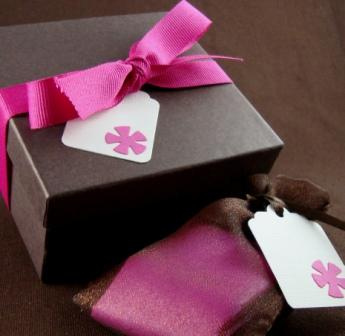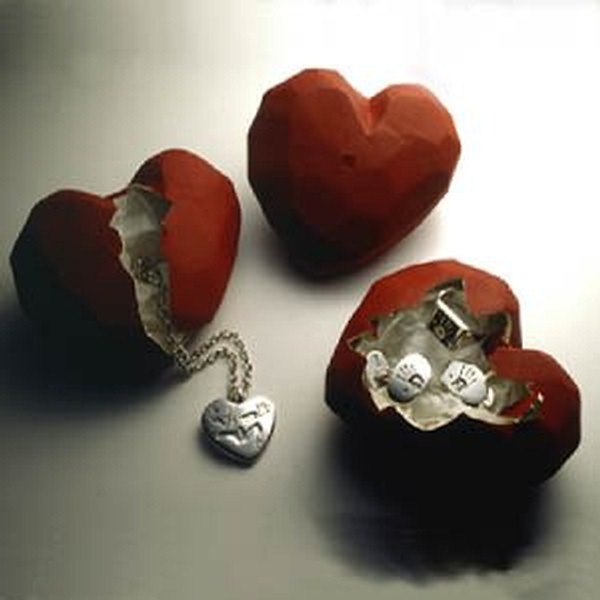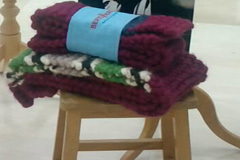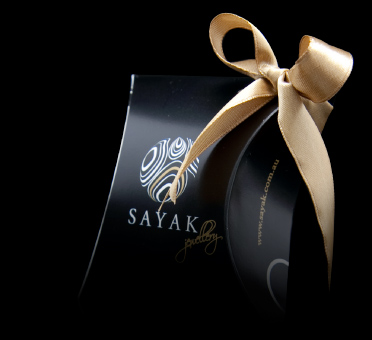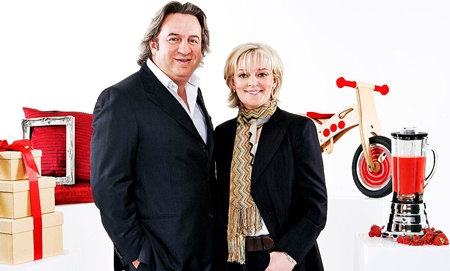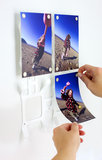
Phlib (Monkey) Frames
So it’s Thursday and it’s time for us to continue our review of High Street Dreams, the BBC ‘reality TV show’ about product branding, packaging & design development and in particular look at ‘Homeware’ and Harry Singer from Somerset with his innovative wall hanging picture ‘Monkey frames’ product.
Harry is a likeable 34 yr old whose idea consists of a fantastic way to display photos using magnets and a metal frame. It was conjured up “in the pub†two yeas ago after ‘connecting’ the thoughts that it’s easy to print photos on-line these days but difficult to display them on the wall. So he made a few ‘Monkey Frames’, as he called them ( a “cheeky, hanging productâ€), and sold them to friends. The rest ‘is history’ as they say. Before the TV show he’d already spent £4000 developing the idea further, so he was pretty serious about it – a great product that’s really unique. Harry, quoting the likes of Google and IBM, with their straplines “organise the Worlds information†and “a computer on every desk in the home†came up with his own version “get photos on every wall in every homeâ€.
However, after a day spent at Goldsmith’s University on ‘market research’ some interesting issues were highlighted:
1. The name ‘Monkey Frames’ didn’t particularly appeal to students.
2. The modularity (or lack of it) of the system also seemed to be an issue.
So Harry had a lot to think about. Critic Nick Leslau reiterated these concerns about the product concept (being a fixed system for 16 photos) and thought that Harry should rethink it and try to redesign it into a more flexible system. Enter designer Ben DeLeesy, famous for his ‘red carpet’ dresses, who then branched-out into interiors 10 years ago. His philosophy: “The product has to stand the test of time – you can’t just be a fleeting trendâ€. He now has one of the biggest ranges of ‘homeware’ on the High Street. His thoughts on how to make ‘Monkey Frames’ appeal more to the consumer were: “ingenuity, ambition, hunger & drive. If Harry gets the timing & product right, the £’s & pence will follow big time.†Easy peasy then!
The first job Ben suggested was to undertake a competitor review, looking at products like a ‘shower curtain’ (a hanging photo product). He was quick to point out to Harry, that “It’s not about your love of photos. At the end of the day, this is business!†(Wise words for any new start up entrepreneur). On the flip side, commenting on Harry’s design, he said: “I love them, but you need to break it down into different sizes, not just a ‘one- hit-wonder’. You’ve got to make it more versatile, to reach a broader base. At that point I think it dawned on Harry the amount of work that he still had to do – and in a very short space of time!
To cut a long story short, Harry went away, completely redesigned his product and in the process made it look really ‘tacky’& cheap (to get the cost down) and was pushed (by the HSD evaluating team) into deciding whether to stick with a ‘cheap-jack’ version or as Ben & the team intimated, take it back ‘upmarket’ and redevelop a ‘cheap-jack’ version later. To everyone’s relief he chose the latter – and everybody was happy.
Enter branding agency ‘Heavenly’, who rightly (in my view) affirmed that ‘Monkey Frames’ (as a brand name doesn’t work too well). It describes the product and not the ‘lifestyle choice’ that the product could deliver. It was also polarizing (aimed at a young consumer) and not of broad appeal.
Their solution:
Brand ‘Phlib’ was unveiled – Photo Liberation – “Set your photos free†– great concept and easy to remember. I like it!
The ‘big test’ was a 1-day test that Jo Malone sorted out at the national lifestyle exhibition – The Ideal Home Show at Earl’s Court in London. The three things that they were trying to evaluate were:
1.   How you sell your product
2.   Whether you are great PR ambassadors to your product
3.   How the consumers view your product
Harry got a great response at the show, making his first sale, but when the ‘financials’ were discussed, it came to light that Harry needed to sell 10,000 units to recoup his tooling costs and 20,000 units to ‘breakeven’ – a big investment on his part and a bit of ‘millstone round his neck’!
Anyhow, that aside, Jo and Nick put Harry through to pitch to Heals, one of the most influential homeware retailers in the UK. A 200 year old store with a turnover of £37M and renowned for ‘breaking’ new designers. He got to pitch to Trading Director Gillian and Head of Accessories Furzana. Apparently they get to sit through 1000 pitches per year and of those, roughly 50% are successful.
Suffice it say, they liked Phlib and gave Harry an initial order of 100. Although Harry was clearly disappointed, it presented a great PR opportunity for him to ‘sell his story’ & background to ‘real customers’ and gain an awful lot of knowledge in the process. As Jo pointed out; “This is like the golden ticket’ – you have to take this opportunity and make it your ownâ€
So what a bout the packaging? (hooray I hear you say!). ……The Heals buyers did mention the packaging at a superficial level. They liked the phrase on the promotional poster “photos belong on your wall – not on your hard drive (well done Heavenly again), but as I’ve mentioned on my other posts about this series, the packaging wasn’t entered into in any great depth. Not surprising bearing in mind the time constraints of the show. So let’s have a look at that now and think about some of the packaging issues that Harry will have either now, or potentially in the future, and try to help him pre-empt them.
As well as selling through Heals (assuming that Harry still is), he is also selling ‘on-line’ from his own website. So what sort of things should Harry consider? Let’s have a look at some of them:
Selling
Harry’s website does a great job at ‘selling’ the brand. On-line retail means the packaging does not really need to perform a selling role at Point of Sale (POS). I’m not sure if Harry is still selling at Heals and how these products are packaged to provide a consistent brand image with website and POS, but it’s something that needs to be considered carefully. I notice that Harry has already started to incorporate with his frames 3M Command™ Strips, to avoid customers having to hang or screw the frames to the wall and that’s a nice ‘added value’ touch. Bearing in mind the flexibility of the modular system that he has developed, the packaging provides an ideal opportunity for ‘up-selling’ other frame sizes, providing ideas on wall-layout, and other photo/frame/homeware accessories.
Informing
If still selling through retailers such as Heals, Harry is probably already aware that product and bar code information will be required. This may not necessarily be so for Harry’s own website initially, but as his business grows, this type of information will greatly aid stock control. For consumers, useful information could include, at a basic level – frame size, colour, price, contact details but at a more emotional and engaging level, provides an opportunity for Harry to ‘connect’ with his target market. He could provide all sorts of information on the brand heritage, his vision for the business, brand values, the methods he uses to make his frames, the quality of materials & methods used and really build an emotional story on which to ‘pivot’ the brand.
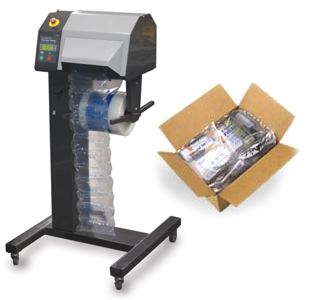
Sealed air transit packaging & inflating machine
Transporting
From Harry’s online store, I should imagine that most of his transport needs are met by a courier such as DHL or other. I’m not sure what sort of stock-holding Heals will want to keep, but it’s certain that they will want to manage & move their stock in the most efficient way possible. To enable this, as well as relevant information, they will want frames boxed into suitable multiples (6, 10, 12 or whatever). The shipping boxes used will require their own ITF bar codes to enable ease of handling & storage.
Protecting
At least Phlib products are not frames that incorporate glass into their manufacture. This makes them lighter and less likely to get damaged in transit than the ‘glass variety’, although being thin metal, they are liable to get bent. Careful use of traditional ‘padding’ materials like corrugated board and bubble-wrap can provide a simple enough ‘filler’ to protect the product from crushing, but there are a number of alternative organic, compostable and ‘sealed air’ filler materials around
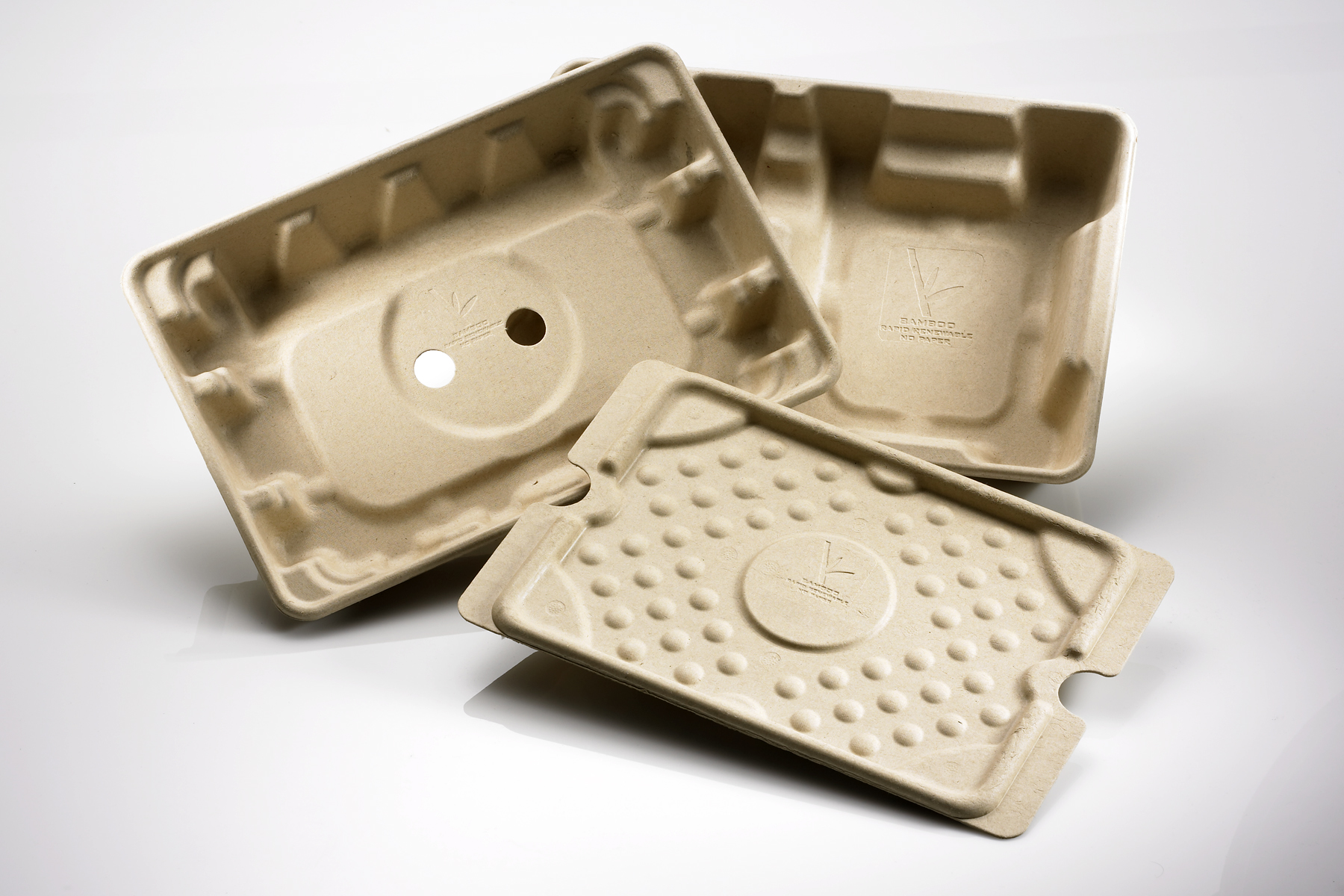
Bamboo transit packaging trays
now that can also provide a more ‘environmentally friendly’ transit packaging solution. If you want an interesting insight into the perils of picture frame packaging issues and remedies, check out this interesting article on the topic on the Datalite website.
I hope that this has highlighted SOME of the packaging considerations that need to be taken into account when developing and selling a product like picture frames and supplying them to market. I’m not sure how many of these issues were discussed ‘off camera’ during the programme, but they all play their role in a successful launch, and ‘branding’ is only a part of the picture. So well done Harry, for getting this far, and we wish you every success in the future.
You can find out more about Harry’s products from his Phlib website.
Tomorrow is the last installment of our High Street Dreams reviews. I will take a look at the final product covered in the last TV programme and, as well a giving an overview of what happened in that show and how packaging and design aspects were tackled as above, I’ll also take a ‘step-back’ and provide my own thoughts on some of the other important issues that entrepreneur (Bex) needs to consider (or should have considered already) in the successful launch of her products to a mass market! So keep your eyes open for the following posting on this site:
Friday 23rd July: ‘Homeware’ – Bex Simon an artistic blacksmith who designs beautiful one-off metal-ware objects for the home.
Chris Penfold
 Dear All,
Dear All, So how will we do this?
So how will we do this?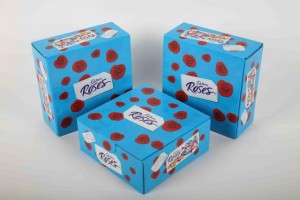  “This entry is a winner because the design provides a 45% packaging weight reduction, allows for a more cost effective supply chain and has been developed to provide the strength and stability provided by a tin, but in a cartonâ€Â
 “This entry is a winner because the design provides a 45% packaging weight reduction, allows for a more cost effective supply chain and has been developed to provide the strength and stability provided by a tin, but in a cartonâ€Â 